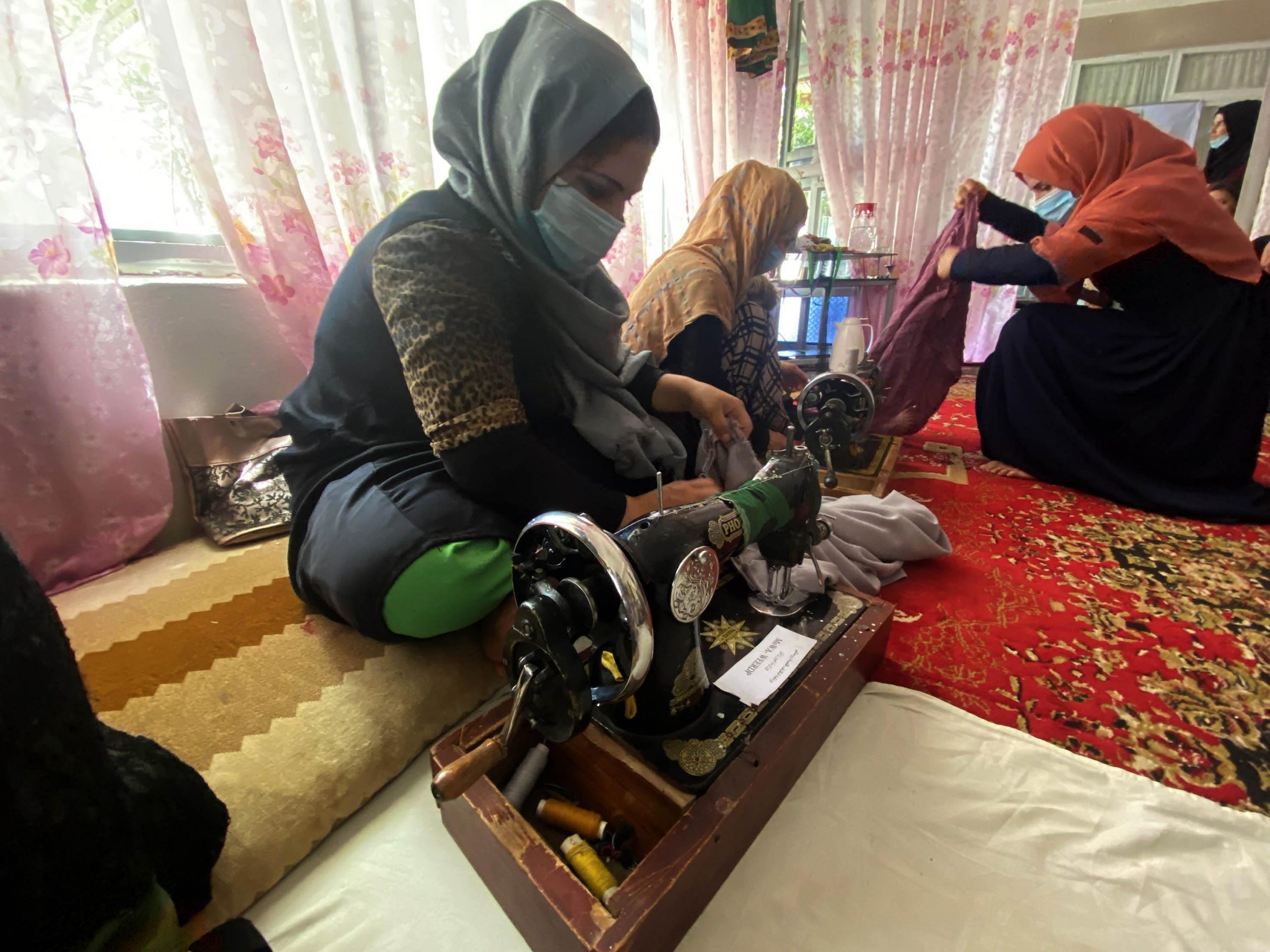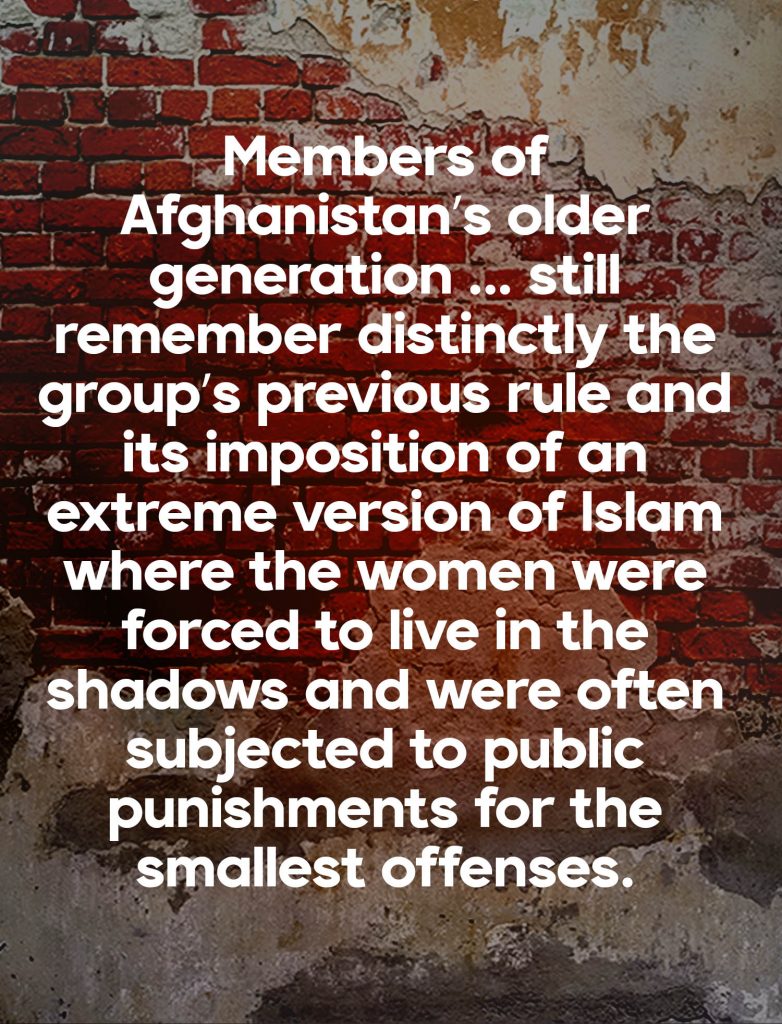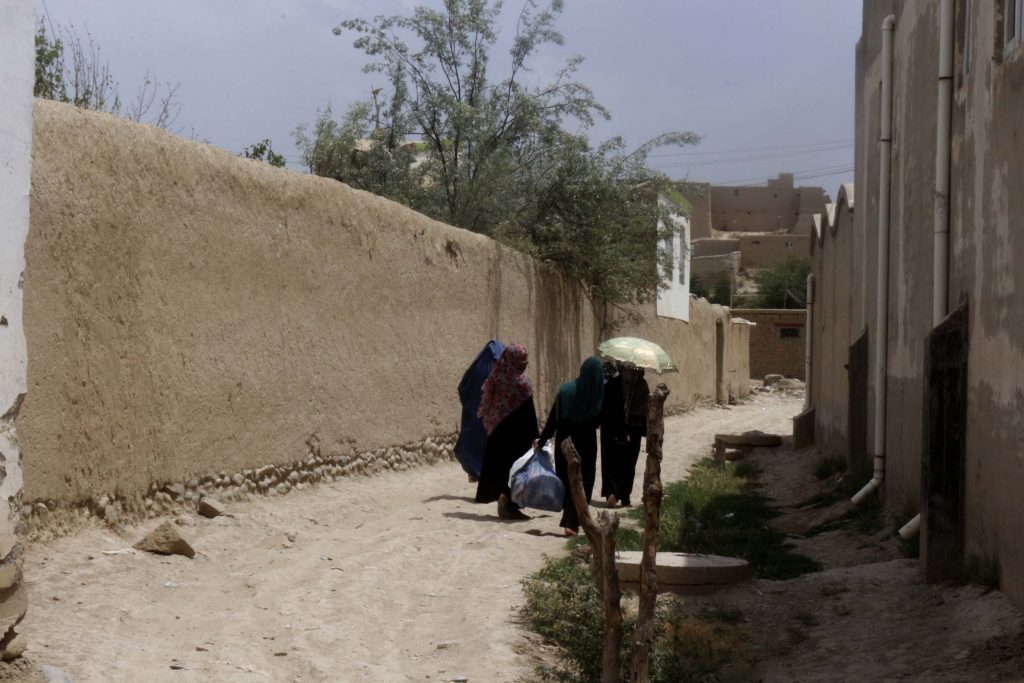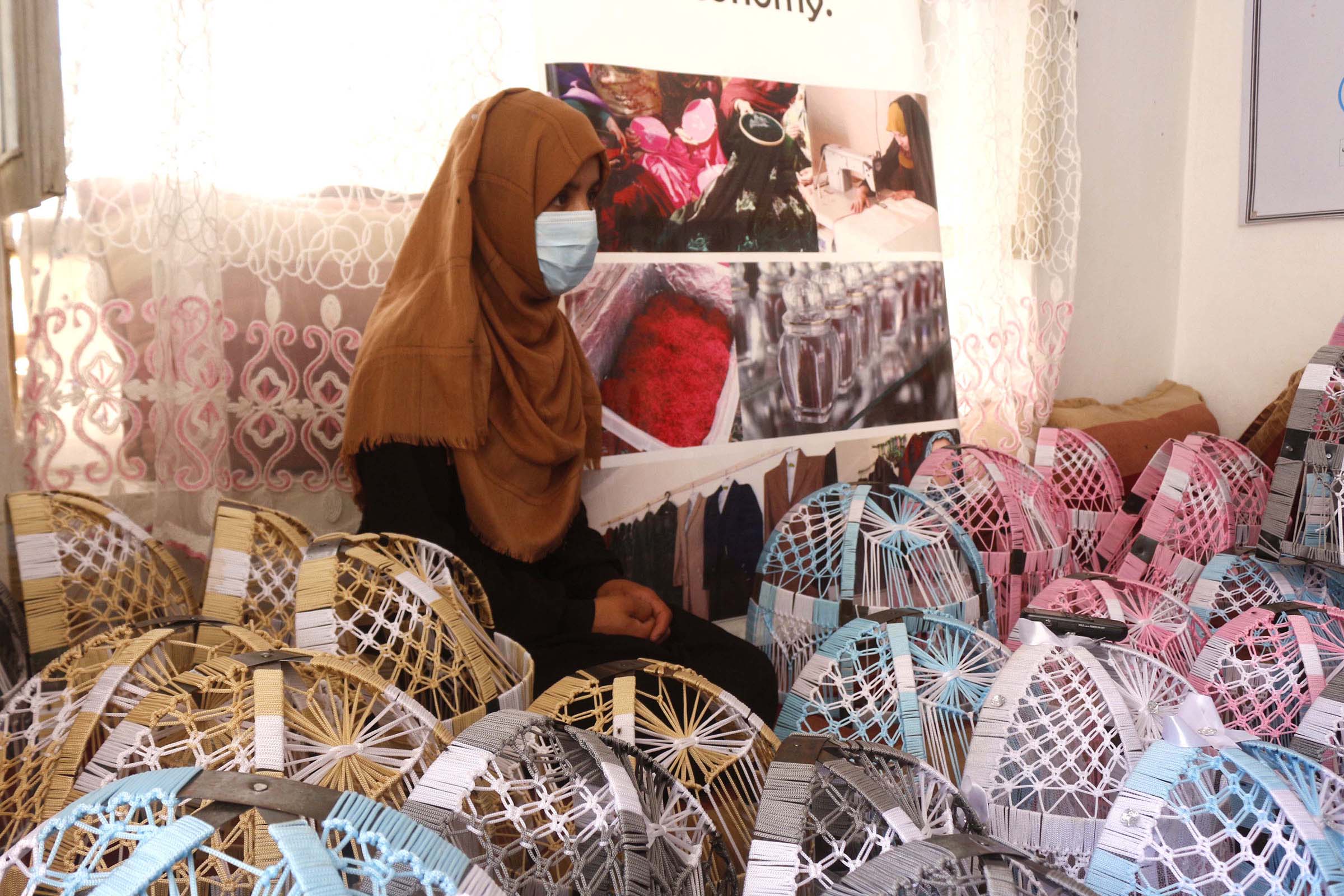Her husband was jobless but she had a university degree, and so he encouraged her to join a new program aimed at empowering women. At first, Chehrah (not her real name) worked as a volunteer at the project. After six months, the program’s social organizer encouraged her to apply as a village facilitator, who would convince the women at the village level to join the project and gain some financial independence. The position would also mean she would have to talk to the women’s male relatives and the district councils and persuade them to allow women to work.
It wasn’t going to be easy work. But in an interview two months ago, a beaming Chehrah told Asia Democracy Chronicles: “I got the job and started earning AFN6,000 (US$70) per month. I am so happy! Being a part of this project changed our economic situation so much.”
That was before the United States suddenly announced an earlier exit of its forces from Afghanistan, moving the complete withdrawal date from 11 September to the end of August 2021. About five weeks after Chehrah was interviewed, the Taliban declared itself as the country’s new ruler, and not a few observers began worrying particularly about the women in Afghanistan.

These women learn to sew clothes as part of a workshop funded by the Women Economic Empowerment Rural Development Program. In the last five years, more than half a million women benefited from these skills training initiative and enjoyed their newfound independence. Now, under Taliban rule, the women fear this will all be gone. (Photo by Kanika Gupta)
After all, during its previous five-year rule in the late 1990s and early 2000s, the Taliban’s interpretation of Islamic teachings had meant a ruthless regime in which women were denied even the most basic rights.
With the Taliban out of power in the last two decades, Afghan women had worked hard to build a presence in the country’s public space. They were educated, had careers, and even achieved a social standing in a deeply patriarchal society.
In the past five years, many women like Chehrah had also joined the Women Economic Empowerment Rural Development Program (WEERDP), a US$100-million project funded by the World Bank and managed by the erstwhile Afghan government. This flagship program was designed to empower poor women across the country’s 34 provinces and 76 districts. As of 31 July, the project had organized approximately 49,000 self-help groups, with a total membership of about 573,000, of whom over 455,000 or about 80 percent, were women.
New image, old risks
Addressing an emergency session on 24 August at the UN Human Rights Council in Geneva, UN rights chief Michelle Bachelet spoke of what she said were credible reports highlighting the Taliban’s violation of human rights.

Anita Ramasastry, head of the UN Special Procedures Coordination Committee, also stressed the increased risk that the women and girls of Afghanistan face under Taliban rule.
Shaharzad Akbar, chairperson of the Afghanistan Independent Human Rights Commission, meanwhile, said women in Afghanistan were being turned away from their offices by the Taliban while universities were asked to discuss “gender segregation possibilities.” She adds that women are “required to be accompanied by male members of their family in public.”
This is even as the Taliban has been trying to present a new image of itself. On 17 August, Taliban spokesperson Zabiullah Mujahid re-emerged to convince the world that the group has changed and would no longer impose its harsh brand of Islamic rule of the 1990s on the country.
“The Islamic Emirate of Afghanistan is ready to provide women with (the) environment to work and study,” Mujahid said, “and the presence of women in different (government) structures according to Islamic law and in accordance with our cultural values.”
Reactions to such pronouncements have been cautious at best. Noted Rupert Colville, a spokesperson for the United Nations High Commissioner for Human Rights, in a statement: “Such promises will need to be honored, and for the time being — again understandably, given past history — these declarations have been greeted with some skepticism. Nevertheless, the promises have been made, and whether or not they are honored or broken will be closely scrutinized.”
The trust deficit
Members of Afghanistan’s older generation, for their part, are taking the Taliban’s words with more than a grain of salt. They still remember distinctly the group’s previous rule and its imposition of an extreme version of Islam where the women were forced to live in the shadows and were often subjected to public punishments for the smallest offenses.
“Actually I am not optimistic when it comes to Taliban,” says a senior official at the Ministry of Women’s Affairs. “It may take a while before they take a decision on how the women will be allowed to go back to work. I have seen the Taliban of 20 years ago when they were very conservative. Women were hit with a whip for not wearing the burqa.”

Women from the village of Qala-e-Ahmed on their way home from the chicken coop they started with funds from one of WEERDP’s self-help groups. (Photo by Kanika Gupta)
The same official confirmed that women in different parts of the country have already been asked by the Taliban not to come to work until the group has made a decision. Even she has been asked to not go to the office, she says, and all the officials of the Ministry of Women’s Affairs are currently stuck at home.
Other women also point out that the Afghanistan of today is much different from what it used to be, even just a few months ago. It was possible back then to do whatever they wanted. But now things have totally changed, says one of the female staff closely associated with WEERDP led by the women’s affairs ministry.
As it is, the ministry’s sector that used to handle WEERDP is reportedly shut down until further notice. The World Bank also announced on 24 August that it was suspending financial aid to the country following worries about women’s rights under Taliban control.
“We are deeply concerned about the situation in Afghanistan and the impact on the country’s development prospects, especially for women,” World Bank spokesperson Marcela Sanchez-Bender said in a statement to CNN Business.
Shuttered program, shattered dreams
Former employees at the women’s affairs ministry say that the suspension of this aid could undo the program’s hard-won achievements of the last three years.
“We were engaged in all 34 provinces of Afghanistan and now people are asking me what will happen,” the senior official heading WEERDP also says. “I received an email recently from the World Bank that they are suspending aid for all their projects. This is so frustrating because it will not only impact the 500,000 beneficiaries but also nearly three million family members who depend on it.”
WEERDP was not immediately welcomed by the entire community. At first, the patriarchal Afghan culture and local customs prevented girls from stepping outside their homes for education, and women from finding employment opportunities. But consistent efforts of village facilitators like Chehrah ensured that the males in the community understood the importance of the program and allowed women to participate in it.

Aadila (not her real name), 18, shows some of the products she learned to make from the WEERDP skills training workshops. Just before the Taliban took over Afghanistan, she took pride in being financially independent as she paid for other skills courses on her own. She was saving up for medical school, but she is now unsure if she will be able to pursue that dream at all. (Photo by Kanika Gupta)
“Before the project came to our village, the men of the village imposed too many restrictions on women,” Chehrah recounted in the same interview with Asia Democracy Chronicles before the Taliban took over. “They were not even allowed to open the door. But now these women go out of their homes and villages to sell their products.”
The World Bank now says that it will continue to work closely with its development partners and the international community to explore ways to preserve the developmental gains from the WEERDP and continue to provide support to the Afghan people.
The likes of Chehrah and 18-year-old Aadila (not her real name) may well be desperately looking forward to that. When Asia Democracy Chronicles chanced upon her in Kabul’s Bagrami District just two months ago, Aadila was so proud of what she had achieved from being a part of WEERDP.
“I am financially independent,” the teenager had told ADC. “I can now pay for the courses I want to do. I enrolled for an English class that I paid for myself. I want to enter a medical university.”
The current turmoil embroiling Afghanistan may have dashed those hopes.●
Kanika Gupta is a multimedia journalist based in New Delhi, India and works out of Kashmir and Afghanistan. She reports on culture and human interest stories from conflict regions.



















